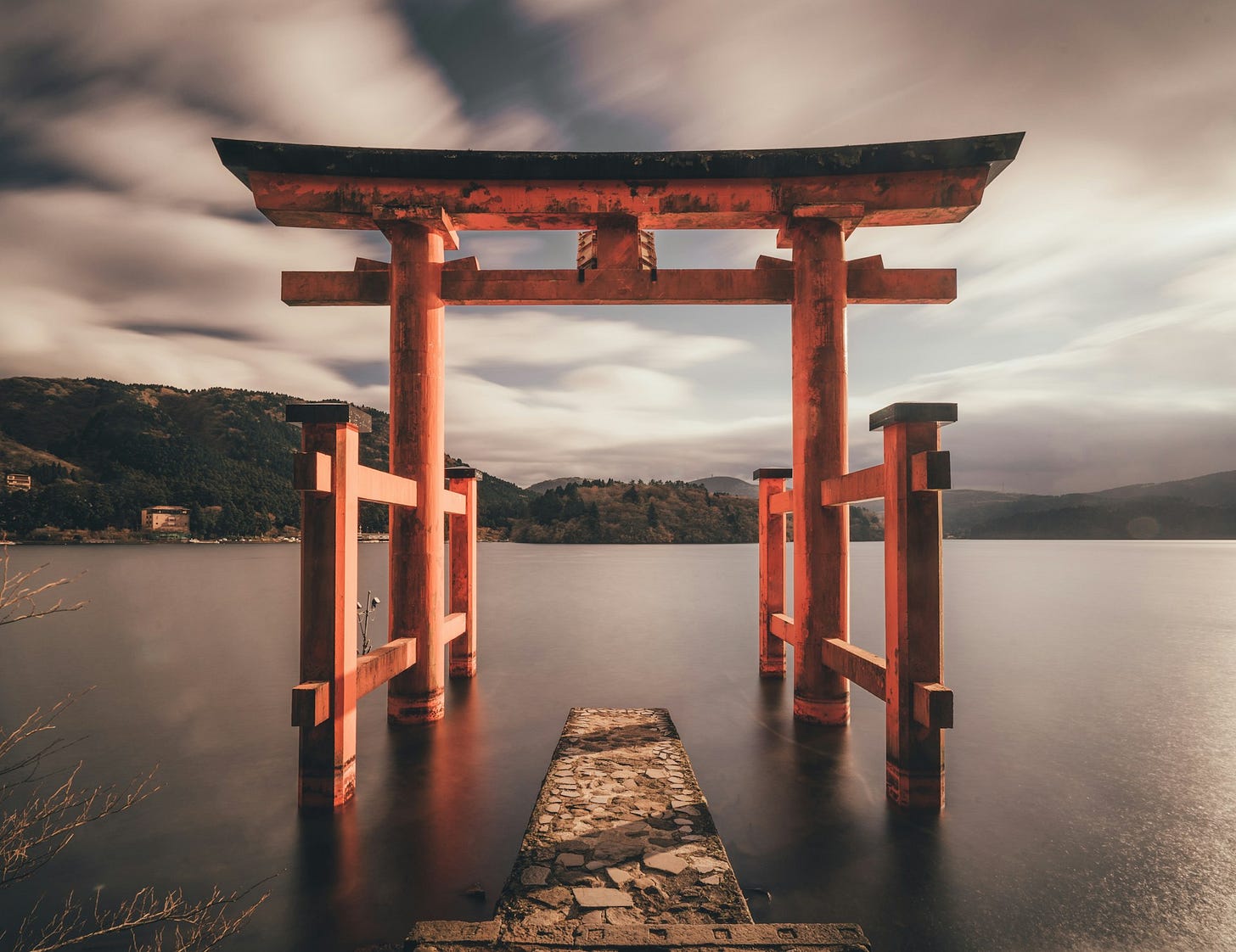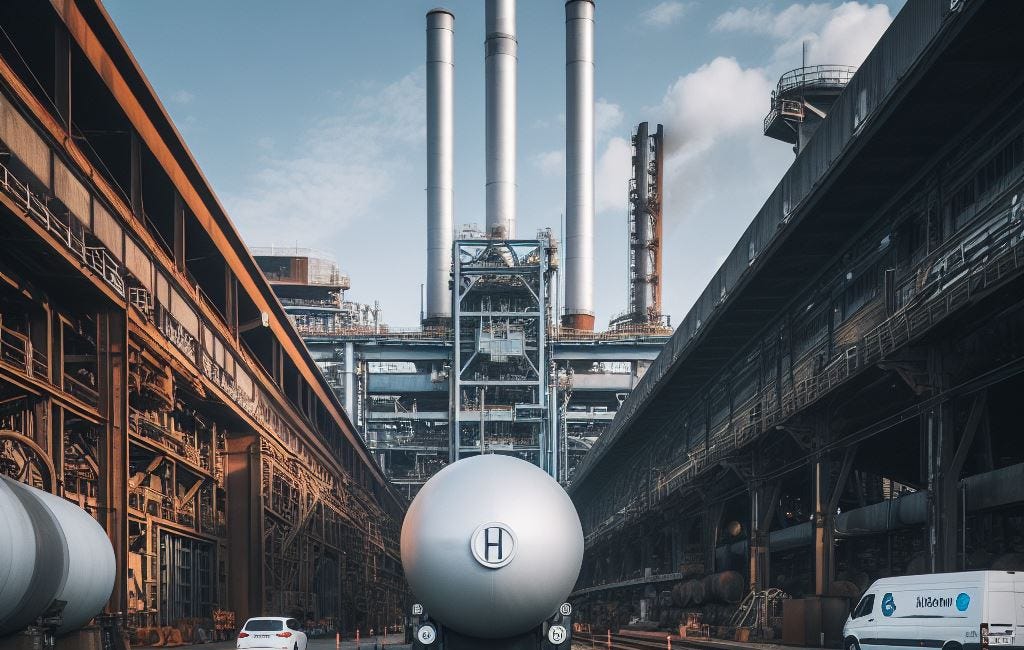Japan's Hydrogen Strategy - A Forward-Thinking Approach in the Green Energy Race
Japan's commitment to a sustainable and eco-friendly future is exemplified by its approach to hydrogen energy.
Recognizing the limitations of fossil fuels and the urgency of climate change, Japan has strategically positioned itself as a global leader in the hydrogen economy. The country's hydrogen strategy is multifaceted, focusing on developing efficient technologies for hydrogen production, storage, transportation, and utilization. This holistic approach aims not only to reduce carbon emissions, but also to establish a stable, renewable energy source that can support Japan's energy needs in the long term.
Japan's hydrogen strategy revolves around three key pillars:
Supply Expansion: The nation aims to increase its annual hydrogen production capacity to 3 million tons by 2030, relying on a combination of domestic and imported sources.
Demand Creation: Japan is fostering a hydrogen-driven society by promoting its use in various sectors, including transportation, power generation, and industrial applications.
Technology Innovation: The government is investing heavily in research and development to accelerate the development of hydrogen technologies, aiming to reduce production costs and enhance efficiency.
Corporate Investments Fueling the Hydrogen Movement
A key aspect of Japan's hydrogen strategy is the active involvement of its corporate sector. Companies like Iwatani Corporation, Toshiba, and Kawasaki Heavy Industries are at the forefront of this movement. Iwatani, in particular, has made significant strides, emerging as a leading investor in the hydrogen sector. Their recent move to acquire a substantial stake in Cosmo Energy Holdings underlines their commitment to shaping Japan's hydrogen landscape. These companies are investing heavily in green hydrogen - hydrogen produced using renewable energy sources - which is pivotal in ensuring the environmental sustainability of this endeavor.
Government Initiatives and Policies Driving Japan's Hydrogen Strategy
Japan's hydrogen strategy is supported by a range of government initiatives and policies that aim to create an enabling environment for the hydrogen industry. The government provides financial incentives, subsidies, and tax breaks to promote hydrogen-related projects and technologies. In addition, Japan has established the Basic Hydrogen Strategy, which outlines the roadmap for the development and utilization of hydrogen. The strategy focuses on building a hydrogen supply chain, expanding hydrogen infrastructure, and promoting international collaboration to ensure the success of Japan's hydrogen endeavors.
Japan's Partnerships and Collaborations in the Global Hydrogen Market
Recognizing the global nature of the hydrogen industry, Japan actively seeks partnerships and collaborations to advance its hydrogen strategy. The country has engaged in international collaborations with countries like Australia, Saudi Arabia, and the European Union to establish hydrogen supply chains and promote knowledge exchange. Notably, Japan has signed agreements with Australia to import liquefied hydrogen, further diversifying its hydrogen sources. These partnerships not only enhance Japan's hydrogen supply, but also foster global cooperation in achieving a sustainable energy future.
Australia: A Strategic Partner in Hydrogen Development
Australia plays a crucial role in Japan's hydrogen strategy. Rich in renewable energy resources, Australia is an ideal partner for Japan in the quest for green hydrogen. The two countries have been collaborating on various projects, with Australia serving as a potential supplier of large-scale hydrogen to Japan. This partnership is not just about securing a steady hydrogen supply; it's also about joint research and development efforts to advance hydrogen technologies. The Australia-Japan collaboration is a prime example of international cooperation in tackling global energy challenges.
Japan vs. China: Divergent Paths in Hydrogen Economy Development
When comparing Japan's hydrogen strategy with China's, distinct differences emerge. While both nations are investing in hydrogen as part of their future energy plans, their approaches and progress vary. China, with its vast manufacturing capabilities and market size, is aggressively pursuing hydrogen fuel cell technology, particularly for transportation. However, Japan's strategy is more comprehensive and integrated, focusing on creating a complete hydrogen supply chain and infrastructure. Japan's emphasis on green hydrogen also sets it apart, highlighting a stronger commitment to environmental sustainability compared to China's current approach, which still heavily relies on hydrogen produced from traditional, less eco-friendly methods.
Conclusion: Japan's Visionary Approach
Japan's hydrogen strategy is a blend of innovation, foresight, and collaboration. By investing in green hydrogen and forging international partnerships, Japan is not only addressing its energy needs but also contributing to the global fight against climate change. As the world watches, Japan's journey in developing a hydrogen economy could provide valuable lessons and a model for other nations to emulate. The contrast with China's approach further accentuates the need for a balanced strategy that prioritizes sustainability alongside economic and technological advancement. Japan's hydrogen strategy is more than an energy plan; it's a vision for a greener, more sustainable world.
More Links:
The 2023 hydrogen strategy is composed of five chapters. The introductory first chapter describes the Basic Hydrogen Strategy as the nation’s will to achieve carbon neutral goals and a hydrogen-based society. The Basic Hydrogen Strategy deals with not only hydrogen but also ammonia and other hydrogen-related energy. It states that it will be revised in about five years. https://thediplomat.com/2023/07/a-look-at-japans-latest-hydrogen-strategy
Japan must nonetheless overcome several challenges for hydrogen to become a full-fledged energy source. It will, for example, need to broaden applications to encompass ships, trains, trucks, and other transportation modes, and build a ubiquitous hydrogen eco-system. It will also be important to make hydrogen amply affordable by building a global supply chain and constructing onsite storage facilities in Japan. https://www.meti.go.jp/english/policy/energy_environment/global_warming/roadmap/innovation/thep.html
One of the biggest issues with Japan’s hydrogen strategy has been its vision of a future society in which hydrogen is used in all sectors and its promotion of hydrogen use in low-priority sectors. Typical examples of this are the ill-considered choice to promote the use of fuel cell vehicles (FCVs) for passenger automobiles when more practical decarbonization technologies such as EVs are available, and the use of fuel cells (ENEFARM) for supplying household electricity and heat when heat pumps and solar PV offer more sensible options. https://www.renewable-ei.org/en/activities/reports/20230720.php
If Japan can achieve the above 12 million tons of hydrogen supply by 2040, then it would be sixfold from the current level. If it can achieve the above JPY 30 per Nm3 by 2030, then it would be around one-third of the current level. If it can also achieve the above 15GW by 2030, then it would be equivalent to around 10% of the world share at the time. https://www.whitecase.com/insight-alert/japan-hydrogen-basic-strategy
In case you missed it:
The Russian-Ukraine Conflict: A Catalyst for Europe's Hydrogen Economy Transition - Change of Directions Newsletter 15.11.2023
As the continent grapples with the repercussions of its heavy reliance on Russian gas, the situation has inadvertently cast a spotlight on alternative energy sources, particularly hydrogen. This editorial explores the extent to which the conflict may accelerate Europe's transition from fossil fuels to renewable energies, such as hydrogen, and the potent…






